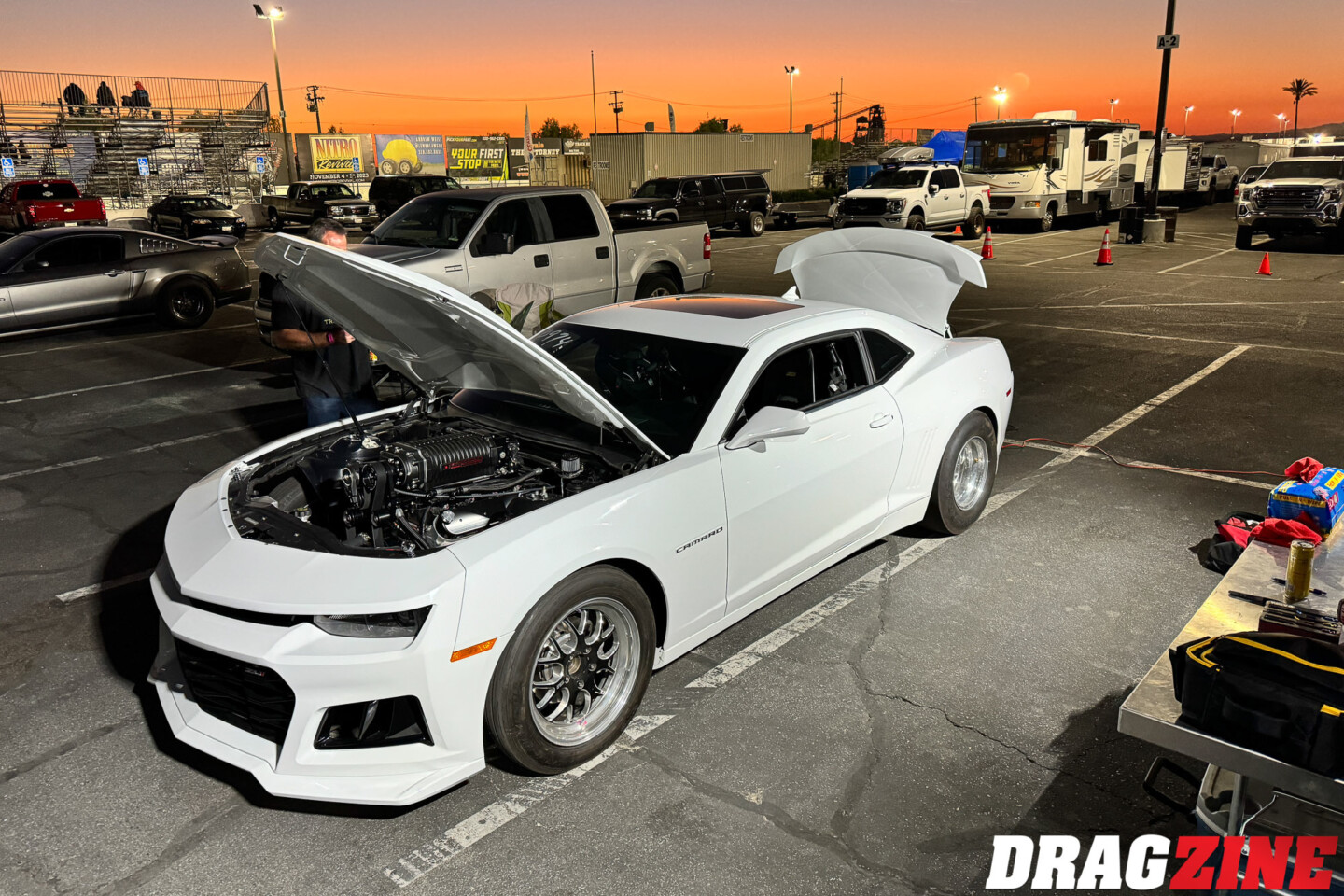Project True SStreet, our in-house 2014 Chevrolet Camaro SS project car, has had a number of upgrades to nearly every part of the car during its tenure in our shop. In this project installment, we’re addressing the fuel system, which has had additional demands placed upon it to support recent increases in horsepower.
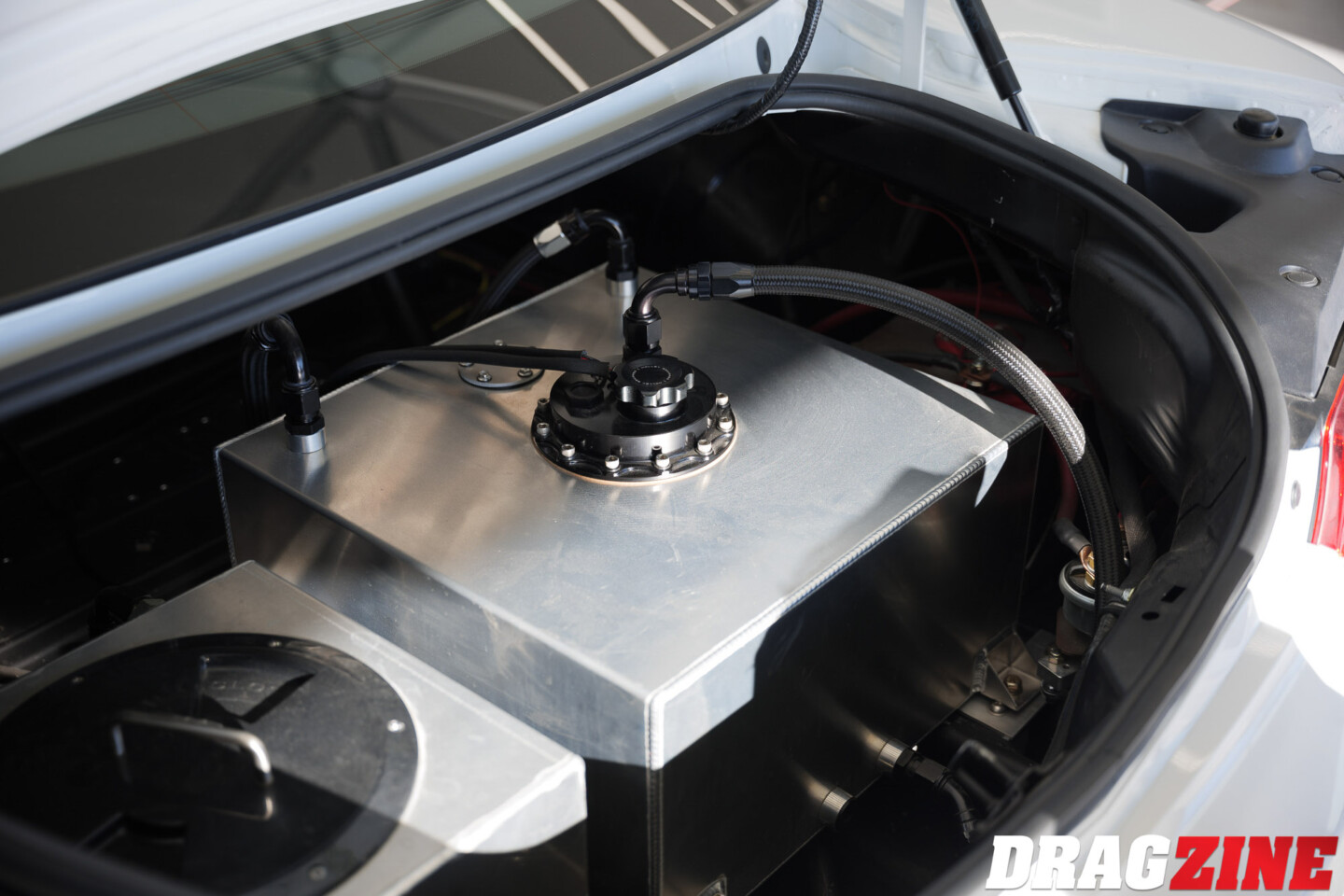
With a larger displacement engine and bigger power goals in mind, Project True Street needed an upgraded fuel system to meet the demands.Holley had just the right components in its VR brushless fuel system series to make it happen. Holley’s fabricated aluminum 10-gallon fuel cell will provide plenty of fuel, and it also features a flange that allows the Holley fuel pump module we chose to bolt right in.
This project began back in 2015, when the original 376 cubic-inch LSX engine was fitted with a 4.5-liter Whipple supercharger and bolted to an engine dynamometer. With a 4-inch-diameter pulley and 3.75-inch lower, the 376 churned out 1,079 horsepower at 24 psi of boost pressure while burning C16 racing gasoline.
The Camaro was outfitted with a fuel system that was designed to meet the needs of our nearly 1,100-horsepower engine combination when running on E85, which would require an even greater volume of fuel.
While the fuel system was ready to deliver what was needed for the 376 cubic-inch powerplant, the project was later upgraded with a 427 cubic-inch LSX bullet with Brodix BR7 cylinder heads before Project True SStreet ever hit the track. After a few passes and pulley changes to the Whipple supercharger, we knew the limit of the fuel system had been reached.
Starting out with the 5-inch pulley on the 4.5-liter Whipple blower, the 427 saw 11 psi of boost pressure and Project True SStreet clicked off a 5.90-second 1/8-mile time and went through the 1/4-mile clocks at 9.30 seconds.
Looking to turn up the wick, a 4.25-inch pulley was bolted on next. The 18 psi of boost pressure outpaced the fuel delivery, unfortunately, and the air/fuel ratio went too lean for our liking, and to be safe for the engine long-term. It was time to upgrade the fuel system once more.
Fattening Up The Fuel System
Obviously, we’re not talking about a fat air/fuel ratio, but we are talking about beefing up the fuel system components to ensure Project True Street has plenty of fuel to complete the quest for lower elapsed times.
To that end, we turned to Holley to better equip this Camaro and to help us extract the maximum performance available from the 427-cube LSX engine.
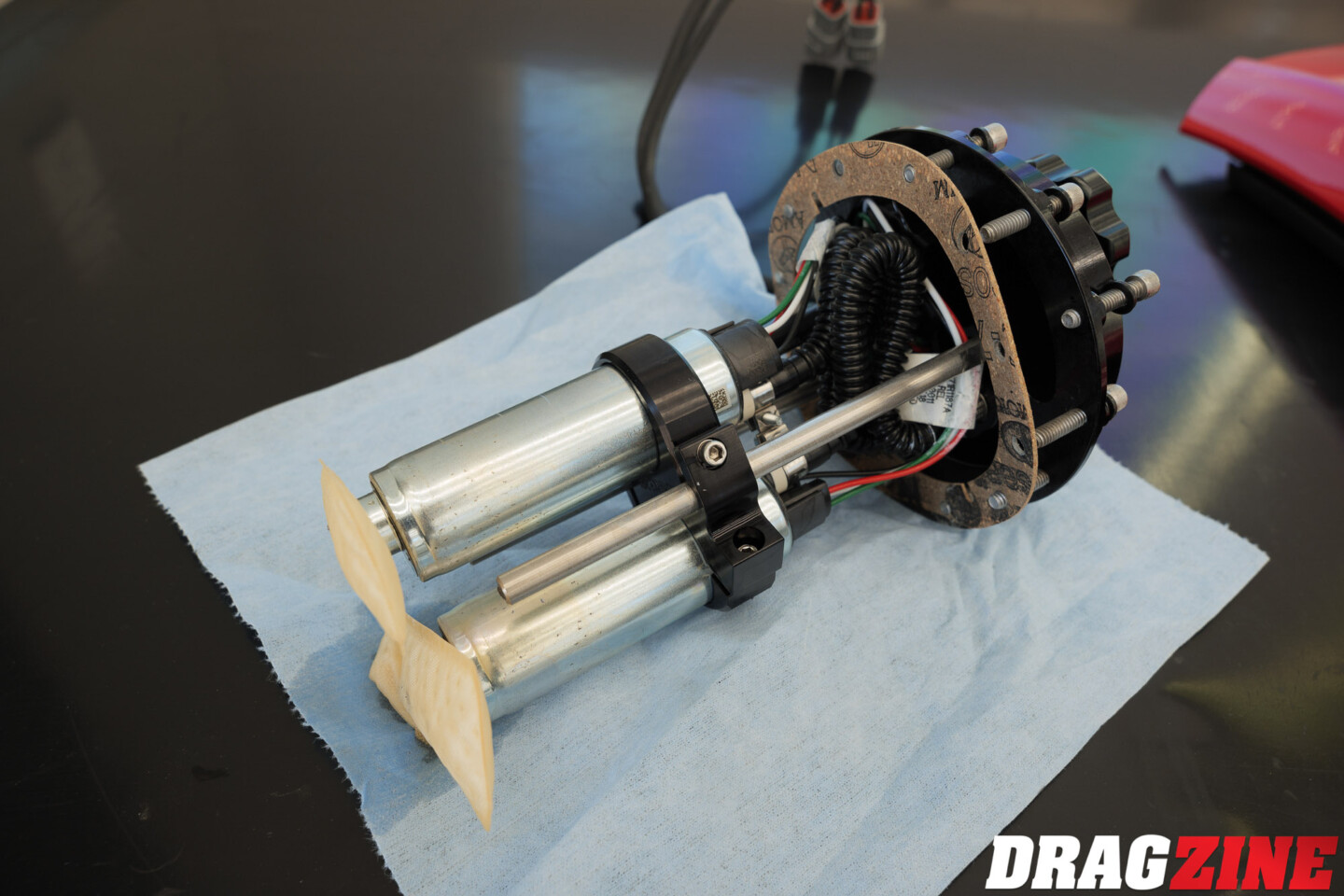
“Holley’s dual electric fuel pump assembly (P/N: 12-149) can deliver 130 psi of fuel pressure and 335 gallons per hour, which according to Holley is enough to support over 2,000 horsepower if we choose to make more power in the future.”
Starting at the back of the car we chose a 10-gallon, flat-bottom aluminum fuel cell that would provide enough fuel for the True Street events, and also be a home to the Holley dual electric fuel pump assembly (P/N: 12-149) that drops right into the cell.
The 12-149 fuel pump assembly is part of Holley’s VR series of brushless fuel pumps, and the drop-in module is equipped with a 12-bolt aluminum flange that allows it to bolt right up to the fuel cell.
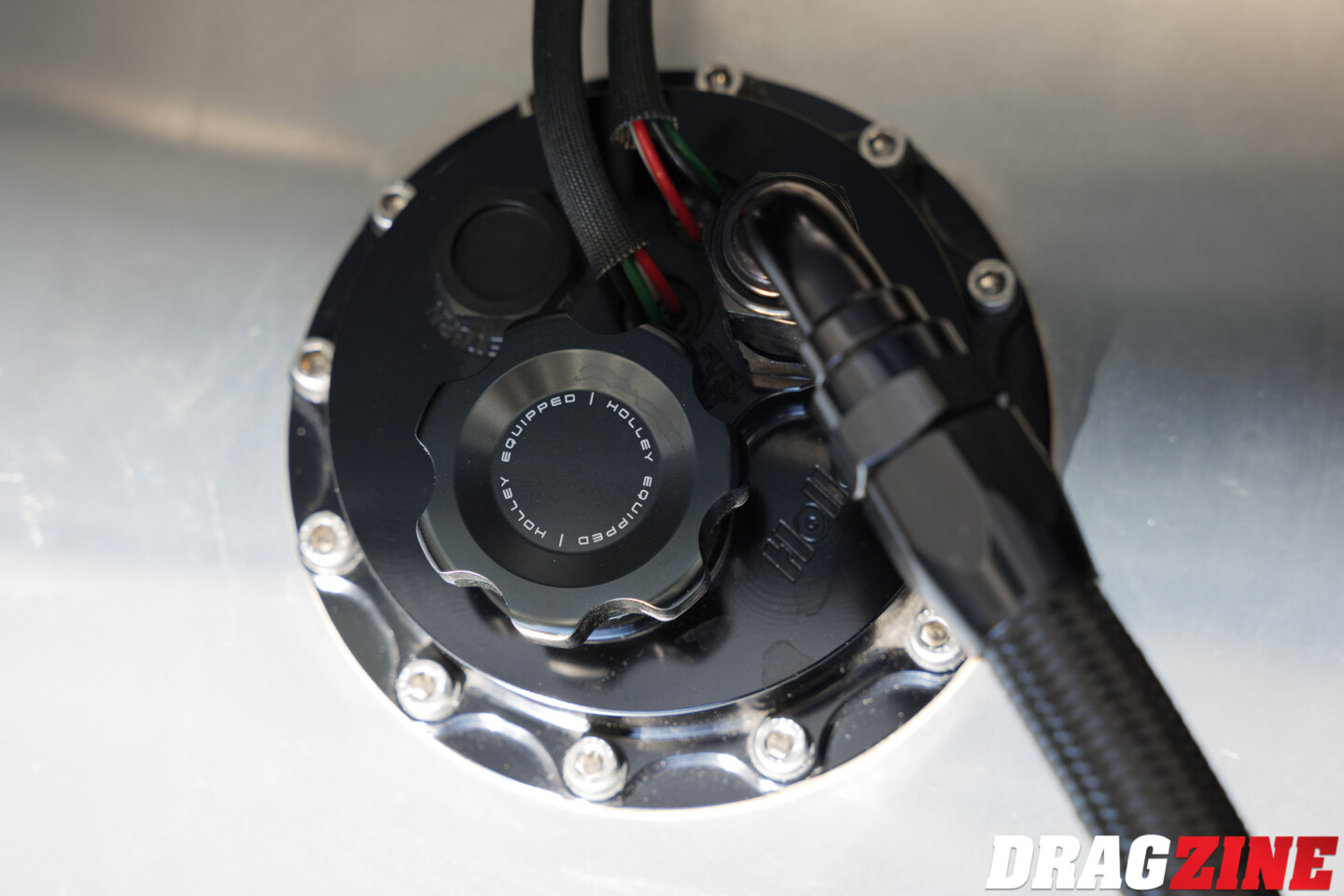
The fuel pump assembly is a direct replacement for existing 12-bolt flange fuel cell caps, and the billet top flange includes an -8 AN inlet port, a -10 AN outlet port, as well as a fuel filler cap. The fuel pump assembly’s depth is fully adjustable from 7.5 to 12 inches deep.
The dual pump controllers allow the pumps to be run at low and high speeds depending on the fuel volume requirements at the moment, and can deliver 130 psi of fuel pressure and 335 gallons per hour. The fuel pump in the module is also compatible with both gasoline and E85 fuels, so it was a great choice for Project True SStreet.
Regulating all of that fuel flow is one of Holley’s VR Series billet fuel pressure regulators. Part number 12-864 was designed as part of the brushless fuel pump product line and can support 3,000-plus horsepower. It’s available in a four port configuration, and they come anodized in bright black and clear finishes for long-lasting good looks and corrosion-resistance. The regulator also features a -4 AN fitting connection for a 1:1 reference for boosted applications.
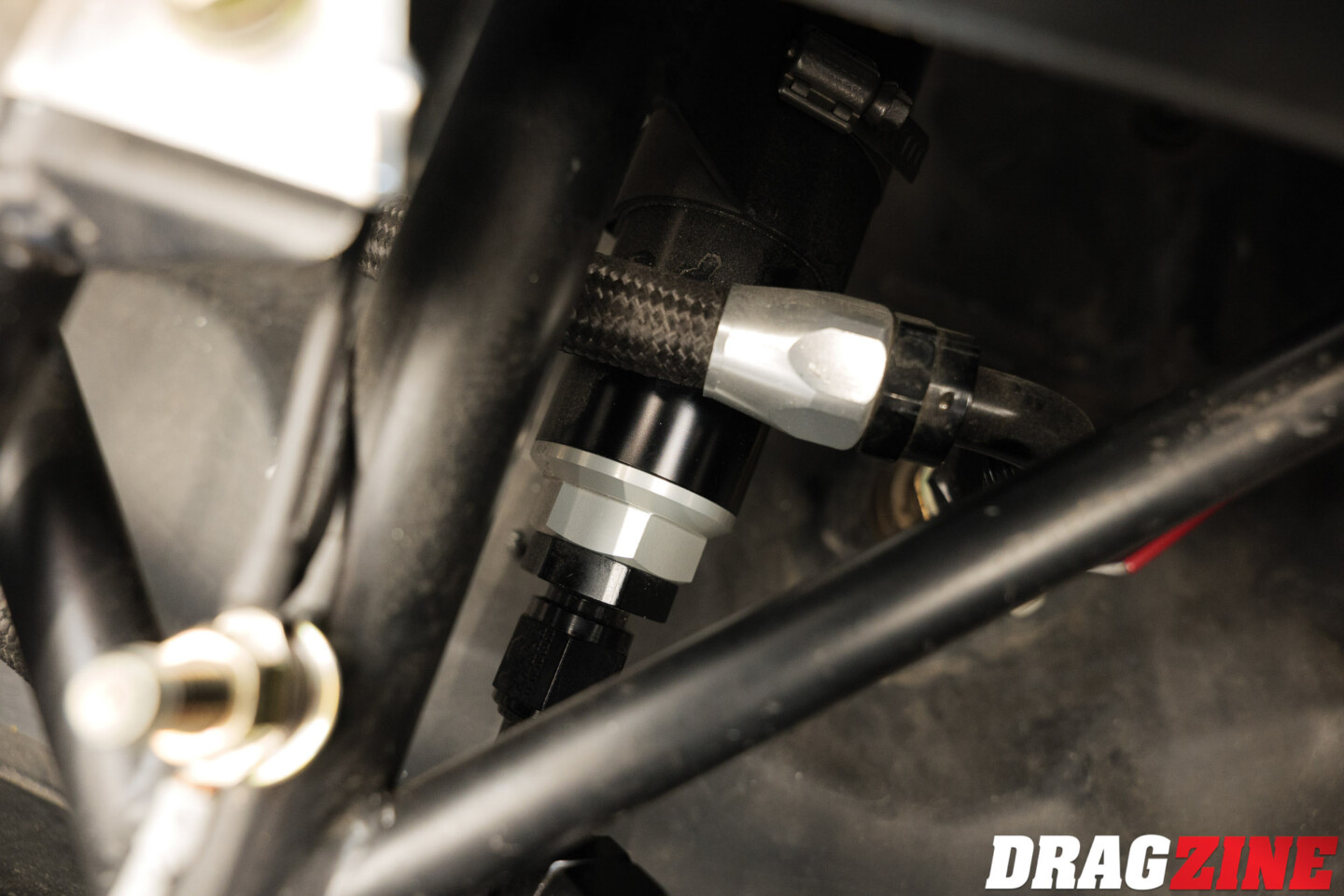
A clean fuel pump and fuel injectors are essential for their health and longevity, and Holley offers 10- and 100-micron filters in its VR Series for this purpose. They feature billet aluminum construction and -12 AN inlets and outlets.
Keeping the pumps clean and clear of any debris or other contaminants before deliver to the fuel rails is a a 10-micron fuel filter (P/N: 162-575). These filters were also designed as part of the VR series and are constructed from 6061-T6 aluminum as well, and feature the same anodizing process for protection.
The fuel line sizes originally used were deemed appropriate, but we did take the opportunity to swap the old hoses for newer versions, and we had to order some Earl’s aluminum AN fittings to get the new components connected.
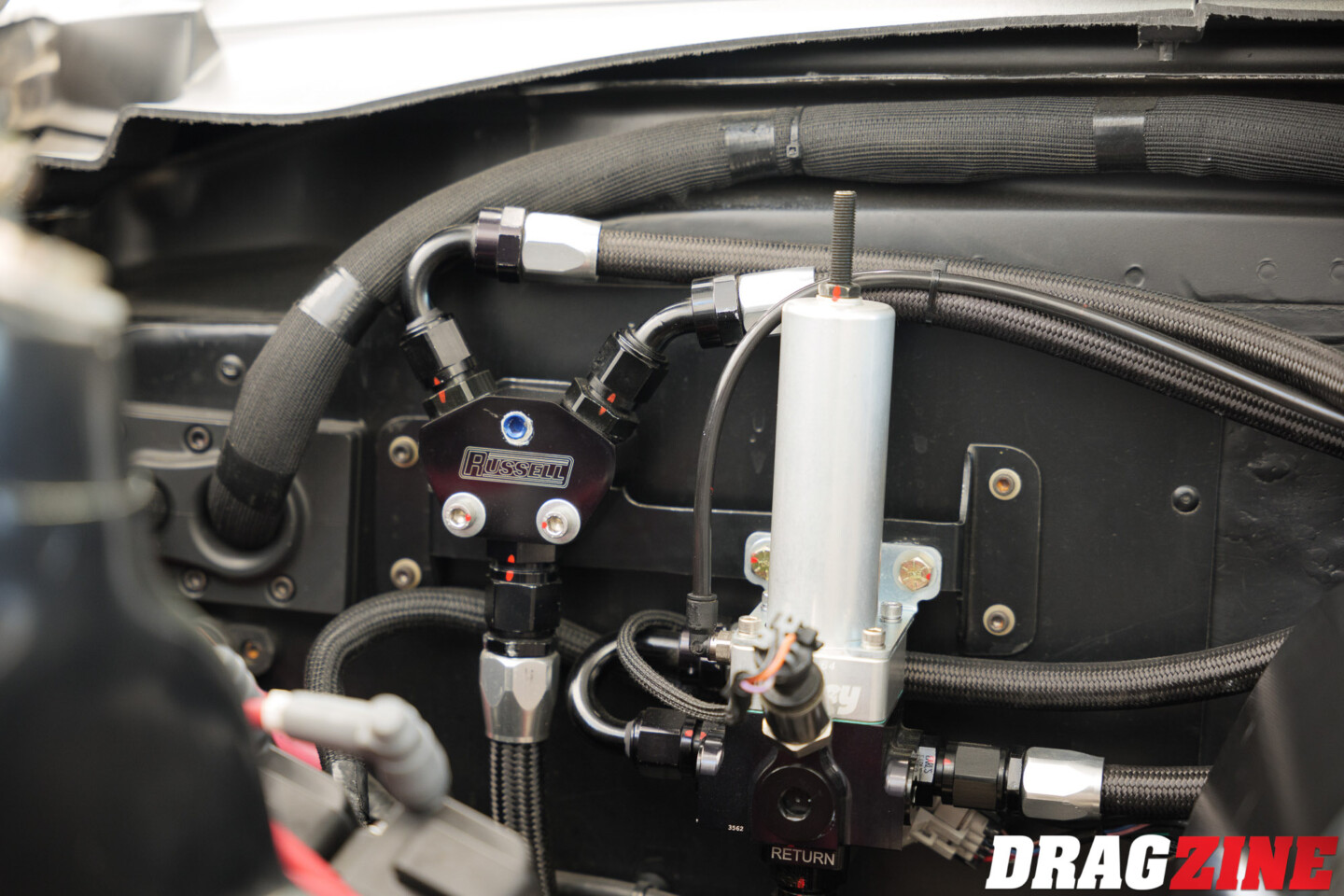
Made from 6061-T6 billet aluminum, Holley’s VR Series billet aluminum regulator is designed for EFI applications and is adjustable from 40-100 psi of base pressure. It is also compatible with gasoline and E85 fuels.
Fuel Injection For Control
As Project True SStreet is a fuel-injected machine, a Holley Dominator (PN: 554-114) was utilized to operate the supercharged engine and control the fuel pumps as well as the 2,200 cc/min fuel injectors.
“Holley EFI software offers a simple secondary fuel pump output as a default. There is a simple check box that you can set the fuel pump to turn on at a certain RPM, but you can configure an unused output in the I/O tab if you require something more customized,” explains Dustin Wilson, Holley’s Product Manager for Ignition and Data Acquisition products.
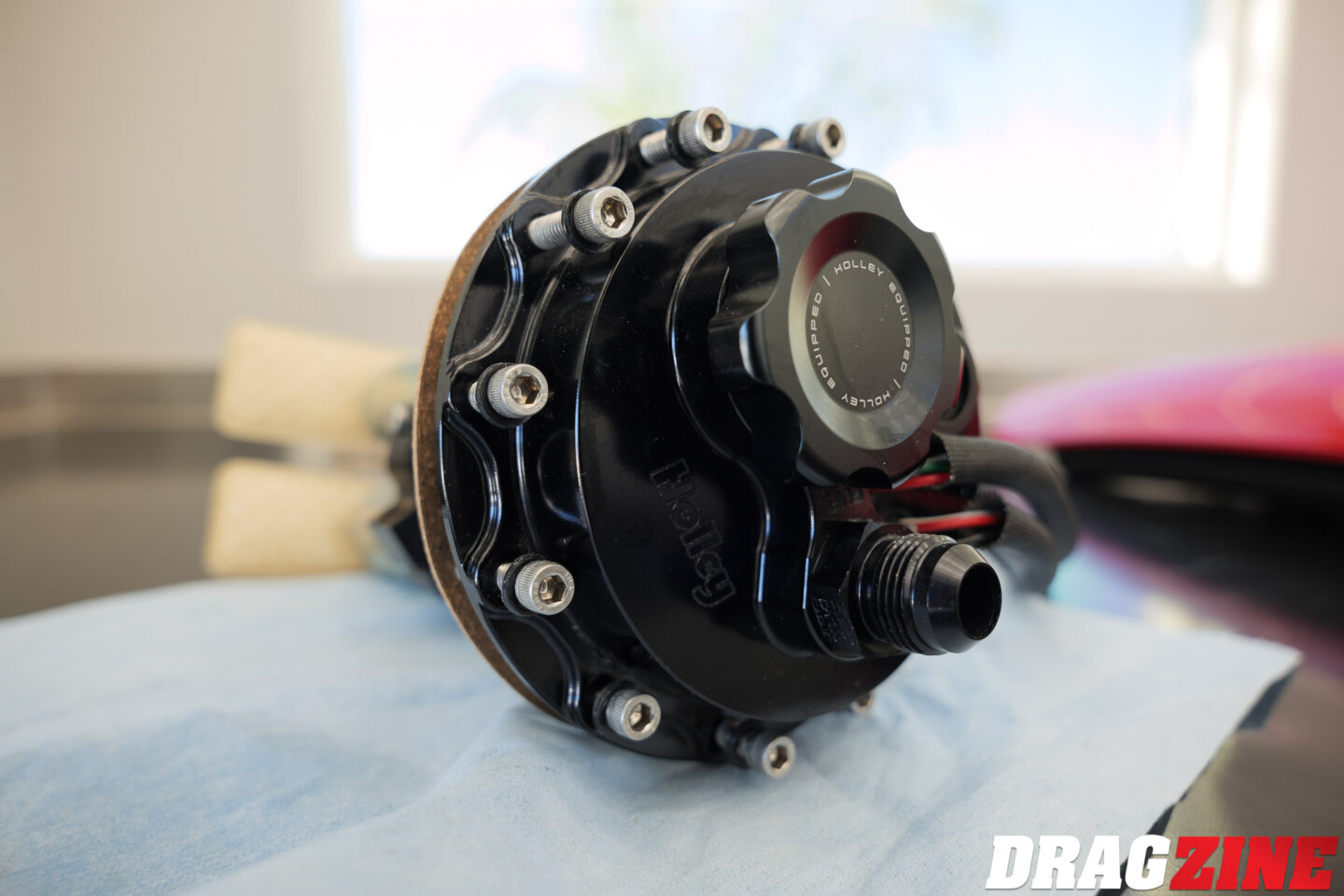
The new fuel pump assembly comes with all necessary hardware. Be sure to fit the included gasket onto the assembly before inserting it into the tank.
Using the Holley Dominator in this application also has other benefits, as well.
“The Holley EFI software is going to make it extremely easy to make adjustments to boost, when you want it to come in, and apply it. In the software there are ICFs (Individual Configuration Files) that can be used for several different things, and they allow a ridiculous amount of configuration,” Wilson says.
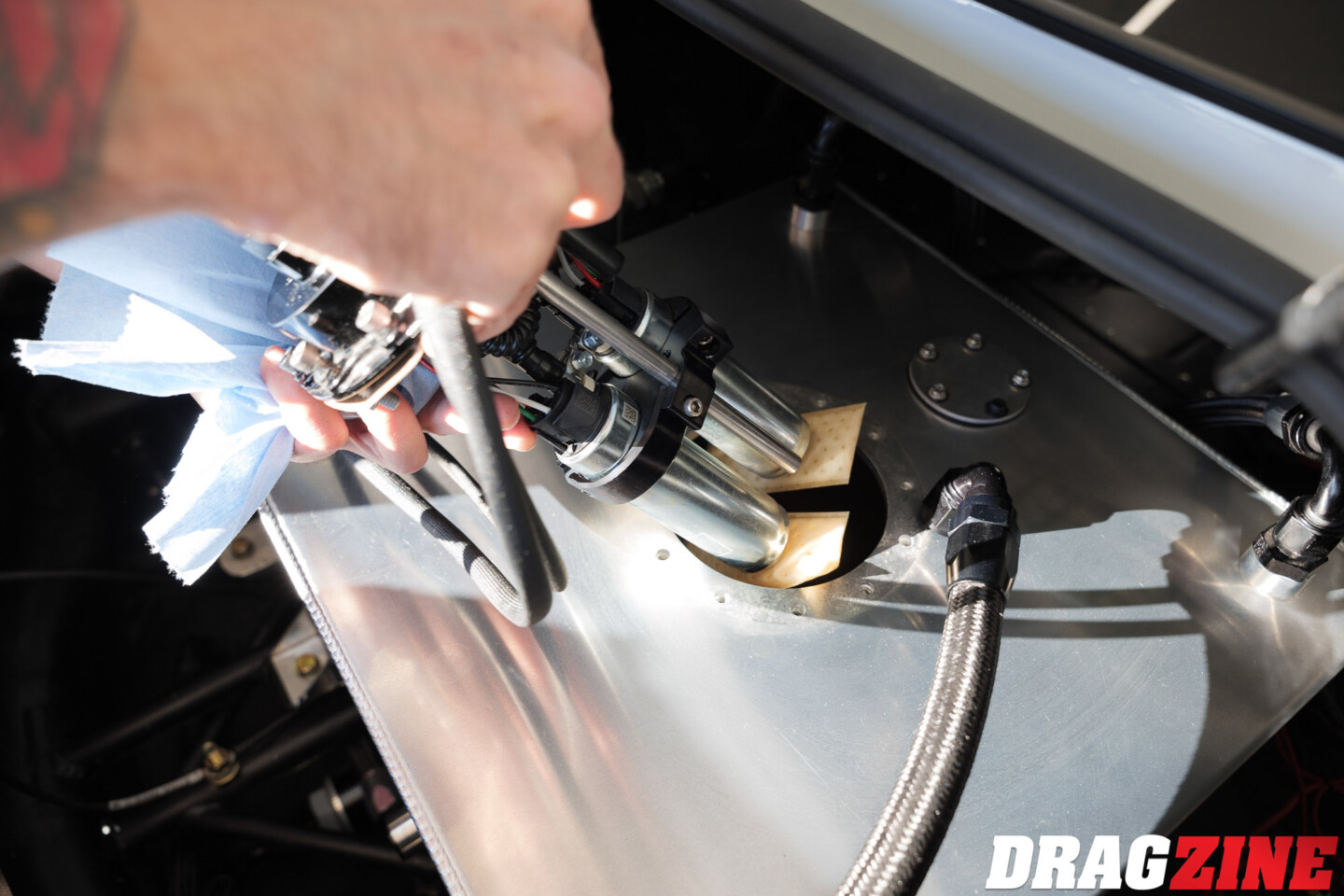
Fitting the drop-in fuel pump assembly into the new tank is a fairly simple task. Though the Holley fuel pumps are fairly quiet for such capable pieces, putting them inside the tank further reduces the sound, which is always helpful in a street car.
“A Dominator will be able to activate the fuel pumps at low or high speeds — you can control the amount of boost and fuel delivery all from one system, which is advantageous,” Wilson explains. “The ECU, in conjunction with this fuel system, will be beneficial for a car that will be driven to the track and then raced. The ECU offers the option to run a secondary fuel pump in the software as mentioned, but many racers will prefer to have different tunes for the street and the track.”
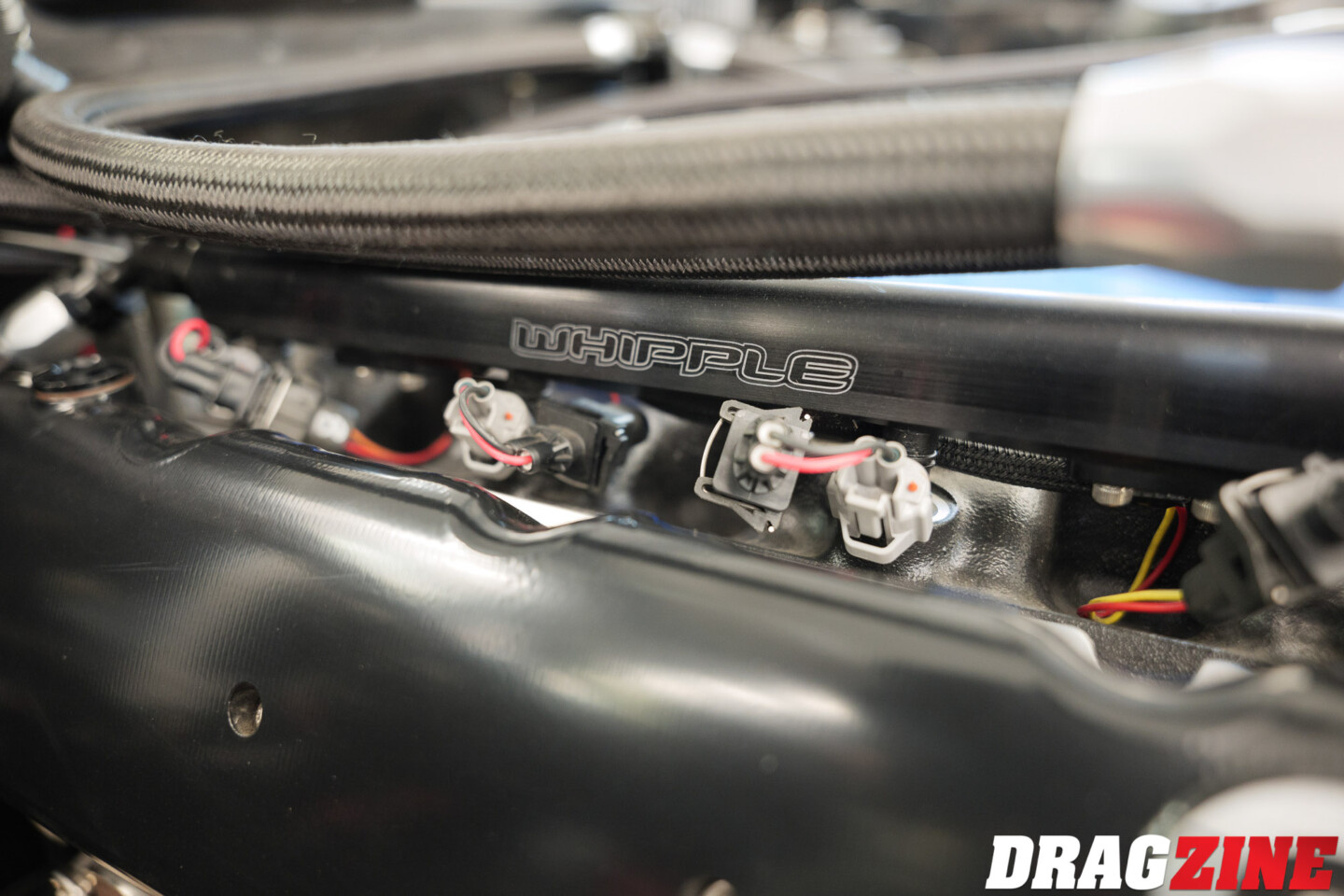
Keeping the fuel injectors readily supplied with fuel is a set of Whipple Superchargers billet aluminum fuel rails that are good for 2,500 horsepower.
With a revamped fuel system, we were able to swap out the 4.25-inch supercharger pulley for an even smaller 3.75-inch one that provided 20 psi of boost pressure. With the added horsepower, Project True Street ran a best of 5.62 to the 1/8-mile at 125 mph. With the smaller pulley, the boost came up much more aggressively, and we are sure there is more performance in the combination with some tuning. We’re now in the process of updating our driveline and other odds and ends, and also switching the rear gear to a 4.10, which should help, as well.
Currently, we are estimating Project True Street’s blown 427 to be making somewhere north of 1,200 horsepower in this configuration, and probably 1,400-plus horsepower by running it at higher RPM levels and being more aggressive with the tune-up. With this new Holley fuel system, we have a fuel system that will be capable of supporting this power level, and subsequently improved on-track performance.
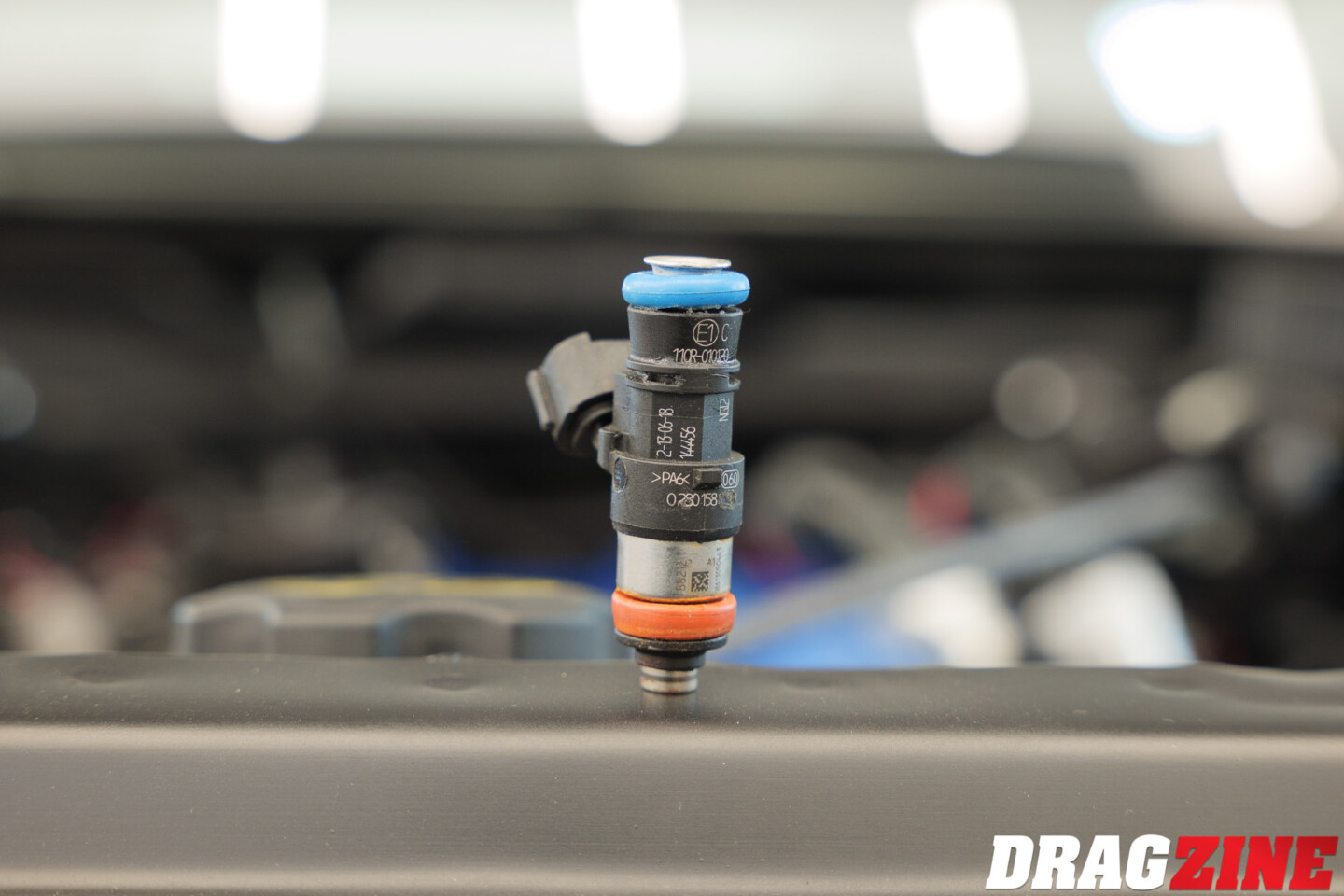
Just like you need to size the fuel system to provide the added volume of fuel for an E85 system, so to do you need to size and spec the fuel injectors to accomplish the same goal. Project True SStreet is utilizing Deatschwerks 2,200 cc/min fuel injectors (PN: 16S-00-2200-8) to provide the required amount of E85 for the boost levels we are looking to run (and perhaps a higher ceiling of upwards of 2,100-plus horsepower, before even messing with fuel pressure).
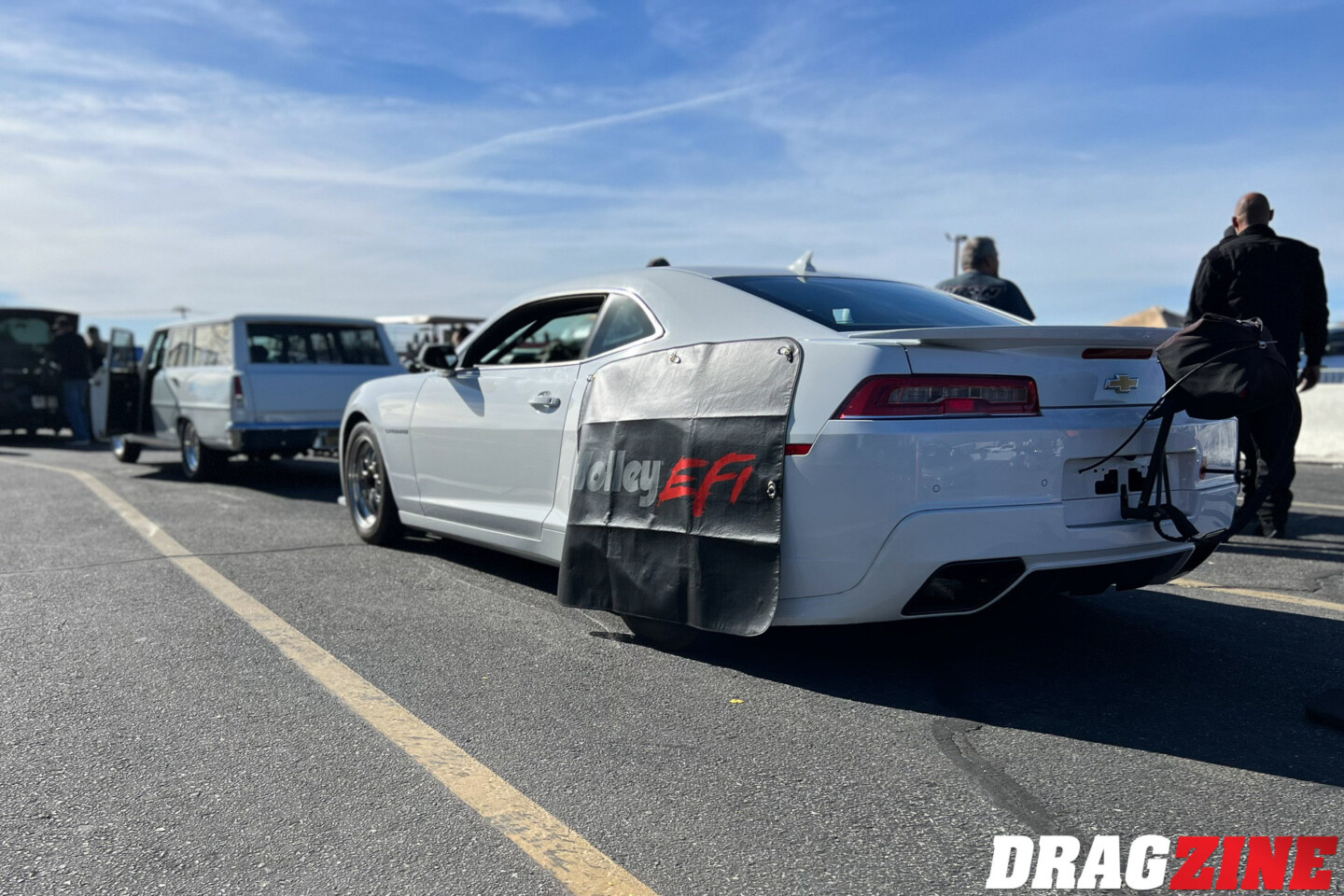
Back at the track, Project True SStreet now had a fuel system capable of supplying enough fuel to allow us to drop pulley sizes and turn up the boost. Previously, Project True SStreet’s best elapsed times were a 5.90 to the 1/8-mile and a 9.30 in the 1/4-mile, with a 5-inch pulley creating 11 psi of boost. Now that the 3.75-inch pulley could be used, Project True SStreet gulped 20 psi of boost and clicked off a 5.62 at 125 mph, and there is still time to trim as the 1.32-second 60-foot time is slow compared to the 1.20s that Project True Street has clocked before.




